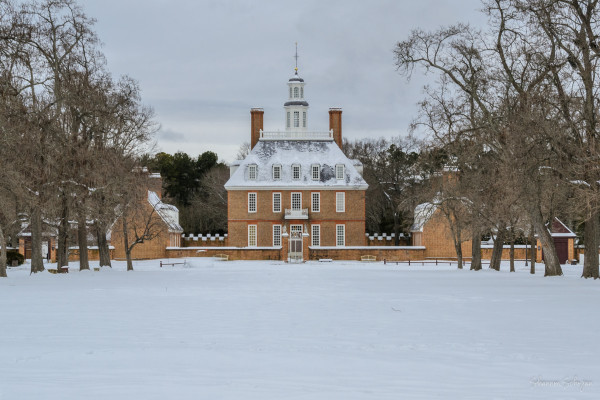 If you’re visiting the Historic Area in early 2016, you can expect to see critical conservation and landscape maintenance work underway at two locations–in the Governor’s Palace formal gardens and along portions of Duke of Gloucester Street.
If you’re visiting the Historic Area in early 2016, you can expect to see critical conservation and landscape maintenance work underway at two locations–in the Governor’s Palace formal gardens and along portions of Duke of Gloucester Street.
The work coincides with a limited site and program schedule in January, when we will take advantage of this traditionally quiet month to focus on conservation and maintenance along with staff training, upgrades to IT and admissions systems, and enhancement of the guest experience, including preparation for unprecedented Black History Month programming in February.
“The Historic Area’s restoration is an ongoing process as our operations, preservation, trades staff, conservators, and other colleagues work to improve and preserve its infrastructure and landscape,” said Colonial Williamsburg President and CEO Mitchell B. Reiss. “Each project is critical, and some are more visible than others. We appreciate the support and understanding of our guests and the community during this important effort.”
Governor’s Palace
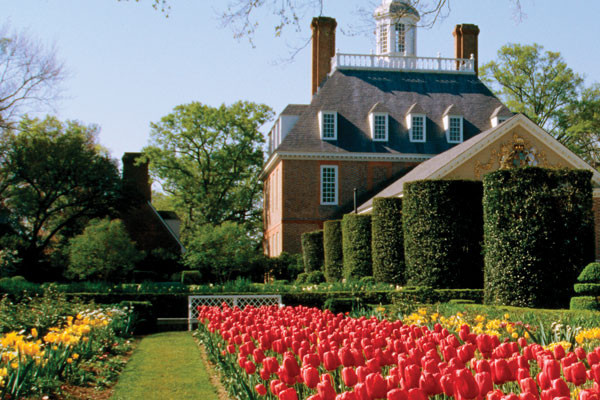
Before year’s end, Colonial Williamsburg operations staff and architectural conservators are scheduled to temporarily remove the north gates from the rear of the Governor’s Palace formal gardens. They will be restored off-site and reinstalled at a date yet to be determined. The 13-foot-high wrought-iron gates are more than 70 years old and were last restored in the 1980s. They are located within the Palace compound so their absence will not affect site access.
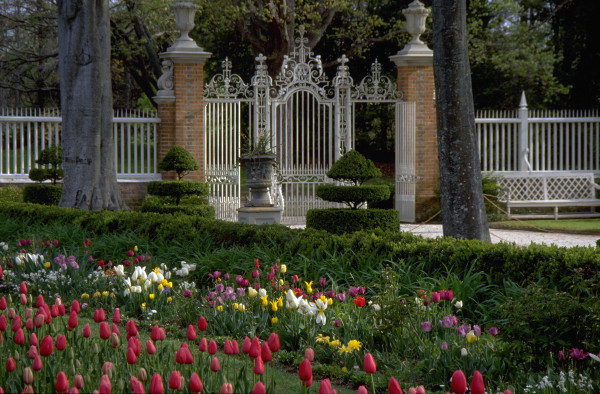 During the first quarter of 2016, staff and contractors will remove (and in most cases replace) landscape elements that have deteriorated due to age or have outgrown their locations and detract from the gardens’ health, maintenance, and appearance:
During the first quarter of 2016, staff and contractors will remove (and in most cases replace) landscape elements that have deteriorated due to age or have outgrown their locations and detract from the gardens’ health, maintenance, and appearance:
- The beech trees along the center footpath on the gardens’ north side are sick, structurally weak and reduce sunlight and water for nearby boxwood topiaries and display beds. They will be removed and replaced with corresponding smaller, flowering trees.
- The gardens’ 12 yaupon columns have grown beyond scale, pose maintenance challenges and obstruct views of the Palace and of the garden itself. The six closest to the Palace hold moisture close to the structure, posing conservation concerns. All 12 will be removed and the six offset from the Palace will be replaced.
- Many of the topiaries on the gardens’ north side are distressed due to competition from the beech trees. They will remain following the trees’ replacement, to be replaced themselves only if necessary.
Duke of Gloucester Street
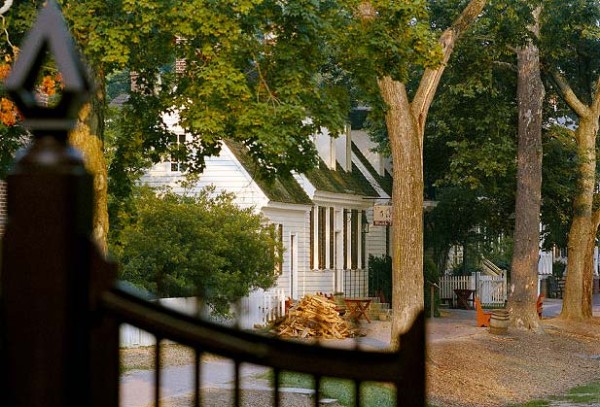 Long-term, incremental work will also begin in January to repair and restore grass plots between the sidewalks and curbs along the length of Duke of Gloucester Street, and to recondition the street’s cobblestone gutters. The turf’s deterioration allows erosion that has exposed tree roots, and soil runoff has covered the cobblestones in many areas.
Long-term, incremental work will also begin in January to repair and restore grass plots between the sidewalks and curbs along the length of Duke of Gloucester Street, and to recondition the street’s cobblestone gutters. The turf’s deterioration allows erosion that has exposed tree roots, and soil runoff has covered the cobblestones in many areas.
Clamshells and pea gravel will be removed from the plots, sod laid, and brick pads for benches installed. Gutters will be restored to expose just the tops of the cobblestones, and brick sidewalks and walks between the street and sidewalk at site entrances will be repaired where needed.
The sidewalk, grass, and gutter repairs will be limited in early 2016 to the block between Queen and Colonial Streets. Long-term plans call for repair of additional stretches in the months and years to come.
Trees the length of Duke of Gloucester Street will be pruned beginning in January to ensure their health and safety, to maintain distance from buildings, and to provide clear views of both the Capitol and the Wren Building at the College of William & Mary from any point on the street, as intended in the Historic Area’s original restoration.
Click here for a look at everything that will be open and will remain “business as usual” in January! And be sure to check back tomorrow for a lineup of all of the exciting exhibits and programs taking place in our Art Museums.
GUEST BLOGGER: JOE STRAW
 Joe is a public relations manager with Colonial Williamsburg, focusing on media engagement related to the Historic Area, the Art Museums and educational outreach. Joe joined the foundation in 2014 after a long haul in print journalism. A lifelong fan of history and of learning in general, he’s thrilled to work in a place where he gets lessons each day from colleagues at the top of their fields.
Joe is a public relations manager with Colonial Williamsburg, focusing on media engagement related to the Historic Area, the Art Museums and educational outreach. Joe joined the foundation in 2014 after a long haul in print journalism. A lifelong fan of history and of learning in general, he’s thrilled to work in a place where he gets lessons each day from colleagues at the top of their fields.
Outside work Joe gets his kicks from family, friends, his dogs, and Star Wars movies.
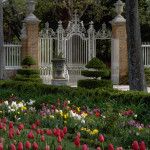
For those who might be concerned about the proposed landscape changes that are mentioned, please keep in mind that unlike architectural features, landscape elements, conversely, are dynamic; that is, they grow and expand over the course of time. Thus, it follows that plant materials will eventually get too large, and their scale grows all out of proportion from when they were first planted. Also, as plant materials age, they also become less robust and far more suseptable to diseases and/or slow decline. Additionally, brick walkways tend to settle and become uneven, and gravel and shell paths become worn and full of low spots that do not drain properly. Many of CW’s gardens were planted decades ago, and are now in what might be termed an “over-mature” state, with all of the maintenance problems and challenges that tend to go along with that condition. As the overhead tree cover develops, they provide the needed filtered sunlight that boxwood plants often need in order to thrive, but they also provide increasing competition to the boxwood plants’ roots for needed nutrients from the soil, so there is really only about a thirty- to fourty year window of optmum growing conditions for both types of plants to work within a symbiotic and complimentary relationship. Eventually, tree roots will crowd into the boxwood roots, and as selected trees die, the loss of the overhead shade canopy will change the amounts of sunlight and heat that reach the boxwood, often causing adverse reactions and loss of vigor in the boxwood planted below. All of this is explained simply to point out that there is a very delicate balance that needs to be maintained in the landscapes and gardens of the Revolutionary City, and it is a process that needs to be carefully managed and maintained by the very talented and dedicated members of CW’s Landscape Services Staff. Thus, what the pending work this year is really all about is the “re-planting and re-cycling” of both the Governor’s Palace and Duke of Gloucester Street landscape environments. This is “curatorial-type” work that has to take place at spaced intervals every few decades, and whenever it occurs, the necessary changes will almost certainly dramatically alter the existing appearance of certain areas of the town from what many visitors have grown accustomed to seeing. This is why it is important to tell our visitors what we are doing, and why it is important to the ongoing care and long-term preservation of this very special place in the American consciousness: Colonial Williamsburg.
Although things will no doubt look pretty different in some areas for the next few years, we hope that our visitors will understand and support our need to actively manage and rejuvinate selected parts of our landscape setting.
Thanks for your concern and attention to these facts about this upcoming work.
M. Kent Brinkley, PLA, FASLA
Former CWF Landscape Architect
Williamsburg, Virginia
Kent: Please give me a call. John Cross
We hope to visit (again) in Feb or March but we’ll be back sooner with our son - he’s a junior at W&M and often encourages his friends to visit CW with him. Knowing the changes you’ll be planning is interesting. We’ll keep an eye out for the improvements!
Thanks for reading and for taking the time to share your thoughts. We appreciate the great interest of guests, friends and supporters in these projects. We can assure you that they are guided by our core mission of preservation, along with the need to maintain the health, safety and beauty of the Historic Area and its landscape. We will keep you posted on our progress, but please come visit and let us know what you think!
Thank you for the informing us about the upcoming changes.
I was just looking at the Williamsburg post cards listed on Ebay. You can see how the town has changed through the years. Mostly the trees and shrubs. They have grown a lot.
My next place to look will be the books published over the years. They bring back a lot of memories of how it was. The years 1960 to present are my memories. I and My family has enjoyed all of our many visits. Our last visit was very special because our grandchildren where being guided through town by thier father our son, who had first seen Williamsburg when he was six. My wife and I honeymooned at Williamsburg and recently celebrated our 45th anniversary in Williamsburg. Changes yes, but each year brings new memories to another generation.
Hope you can keep the masses off the grass and enforce the use of walkways!
I hope that changes being made will not rob us of memories spent in Colonial Williamsburg. My family and I have shared so many pleasant times in CW that the thought of change is a bit unsettling. I am active in our early American History, living history in New York State, it is understanding that grounds must be maintained and plants and trees protected, but we also must remember the joy that visitors gather from their past experiences at CW. May the work of CW live on for future generations to be enlightened and filled with the blessings of being an American citizen and our duty to protect the rights given to us by God through the work of the founding fathers and mothers.
Thank you for your dedication.